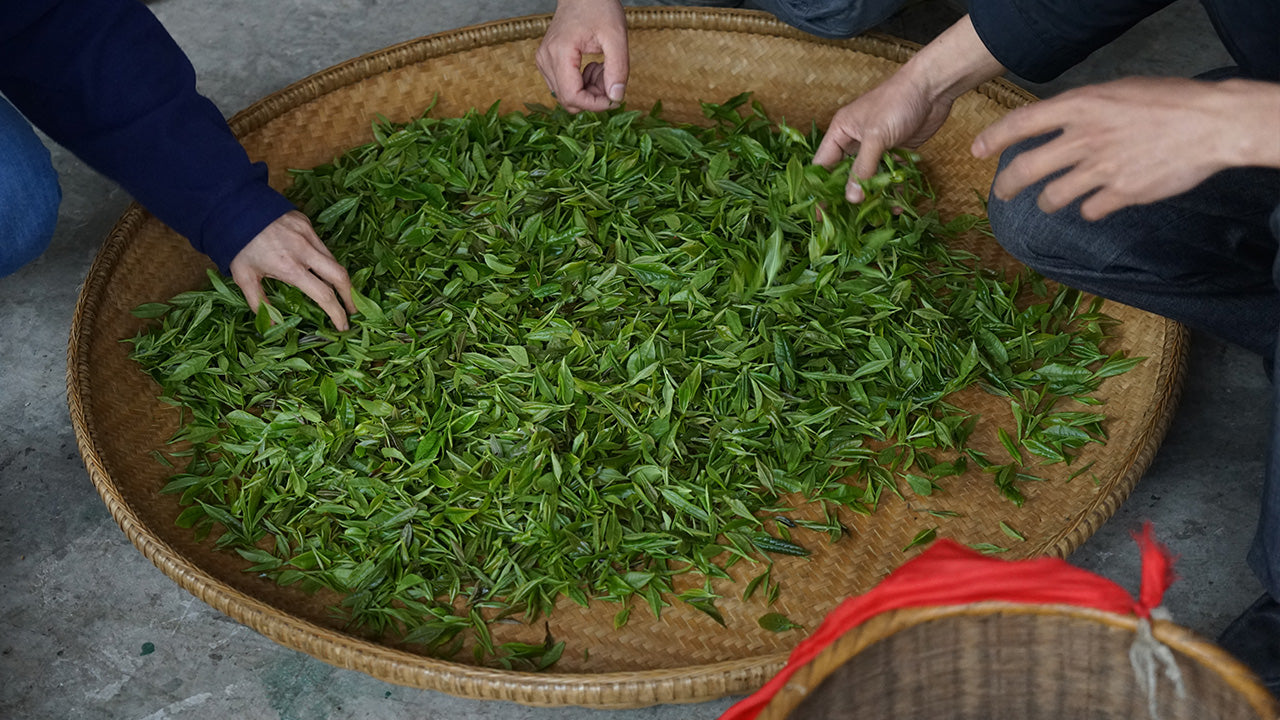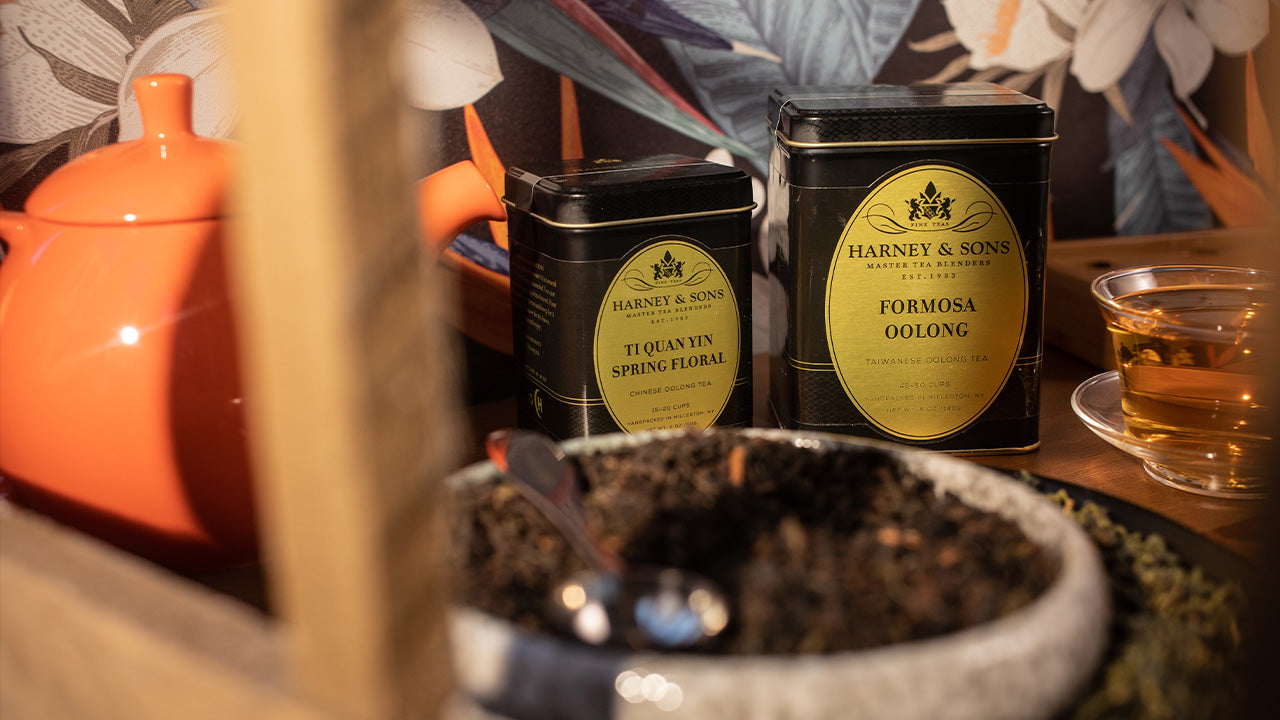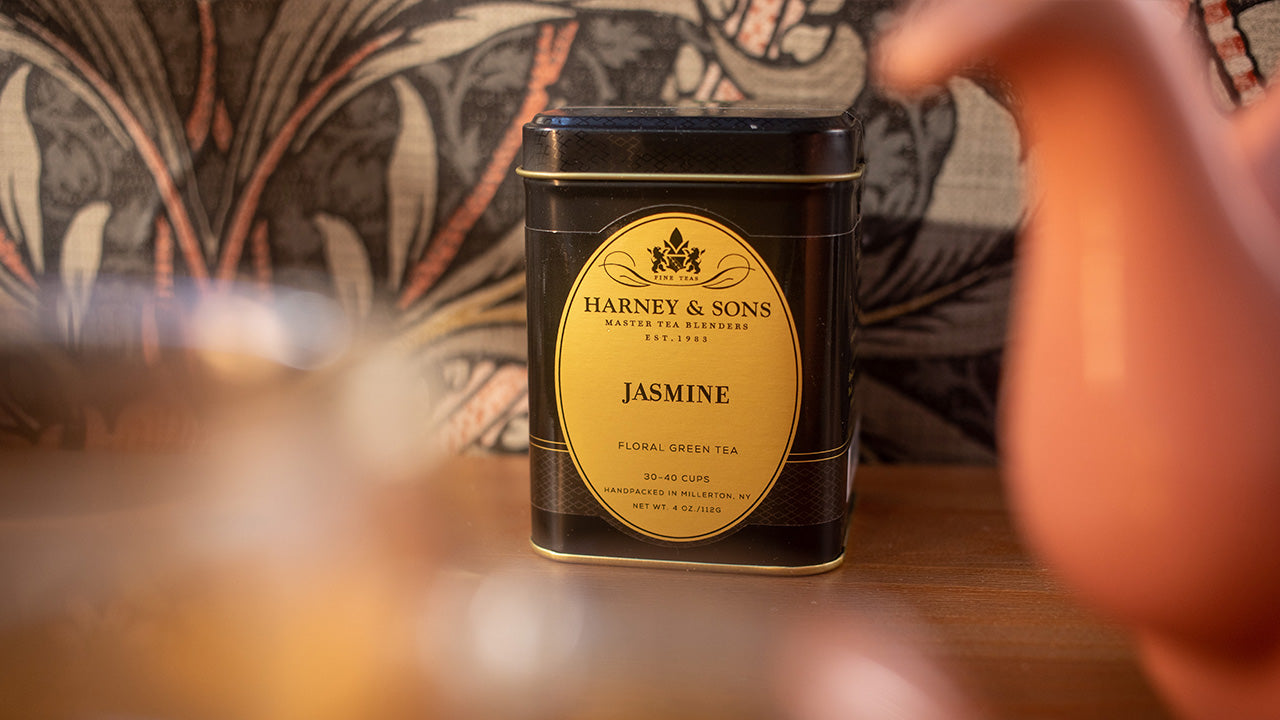With so many types of teas out there – Harney & Sons alone offers over 300 varieties – you might be hard pressed to narrow the list down to the main types of teas. Tempted as you might be to list just two categories – (1) Hot Cinnamon Spice and (2) everything else –, there are actually six main types of teas: black, green, white, oolong, yellow, and pu-erh.
If you’re wondering why herbals aren’t included in that list, before you get out your #HerbalStrong signs, we’re talking about teas that come from the mother plant of true teas, Camellia sinensis. The six teas we named are actual teas from that one plant. Herbal teas, or tisanes, aren’t true teas in that sense, but of course, they are just as wonderful in every other way. To give herbals some love in this blog, you can read more about them on our Everything You Want to Know About Herbals and Tisanes page, or Teas From Another Mother blog. See, we gave them their due! But for now, back to the Big Six.

Black Teas
Black teas are the ones most Americans, in particular, are familiar with. What makes a black tea black is that the black-tea makers do not fix their teas to preserve the green chlorophyll as green-tea makers do. Instead, they allow the leaves to darken.
To get all sciency on you: during oxidation in tea, an enzyme in the leaves reacts with oxygen to create new brown-colored compounds called “flavonoids.” As oxidation begins, the first flavonoid to emerge is called “theaflavin,” which makes the tea golden but also quite brisk and puckery. If oxidation continues, milder flavonoids called “thearubigins” emerge and give the tea a rounded, gentler body and a darker brown color. The slower the oxidation, the more thearubigins, the mellower the tea.
Generally speaking, Chinese black teas consist mostly of thearubigins, since Chinese tea makers slow down oxidation as much as possible. Loaded up with thearubigins, the teas taste delightfully rounded and gentle, more mellow. More full-bodied black teas made outside China that we here at Harney refer to as British Legacy Teas are heartier and are suited to enjoying with milk and sugar.
To learn much more about Black Teas, visit our Black Teas 101 page for black tea caffeine levels, black tea brewing tips, and more, or read our Types of Black Teas blog.
Green Teas
Green teas are the most ancient of teas. Originally from China, they were also transplanted to Japan many centuries ago. Green tea production methods vary, but the focus is always to fix the green color, which means, unlike black teas that are allowed to oxidize, green teas are not oxidized.
While milder than most black teas, green teas are considerably more assertive than whites, with a fuller, rounder body, a darker liquor and delicious vegetal flavors. Green teas have grown in popularity by leaps and bounds with Westerners as word of the benefits of green teas have spread. Learn everything you want to know about green teas on our – wait for it – Everything You Want to Know About Green Teas page, including how to brew green tea, how to store green tea, health benefits of green tea, etc. For the differences in different types of green teas, including Chinese green teas, Japanese teas, flavored green teas and matchas, check out our Types of Green Teas blog.

White Teas
White teas are among the rarest teas in the world. They are the least processed and made of hand-plucked, unopened buds often loaded with tiny downy hairs. Where green and black teas draw their more robust qualities from mature leaves, white teas consist usually only of buds or tips. It brews up a subtle blend of sweetness and vegetal flavors. White teas are grown all over the world, but the best come from Fujian province in China and Sri Lanka in South Asia.
While the name is a bit of a misnomer since the teas are not exactly white – the tea buds grow to a bright green color, fade to silver and brew to a pale yellow – the liquor yields not only the lightest color but also the leanest body of all teas. Their aromas and flavors are wonderfully subtle, requiring careful attention.
Discover the wonderful simple yet complex world of white teas on our White Tea 101 page. Fun fact about white teas: they have the highest caffeine content!

Oolong Teas
Oolong teas bridge the divide between green and black teas. If green teas are not oxidized at all, and black teas are 100 percent oxidized, oolongs range from 10 to 75 percent. They likely first appeared 300 years ago in China’s coastal Fujian province. Repeated rolling brings the tea to the desired level of oxidation. All this work makes for very fragrant teas that are light in body.
A sip from a light oolong can taste like a walk through a garden packed with lilacs, gardenias and jasmine. A darker oolong can smell like a bakery right after it’s finished a round of peach pies. Oolongs take on an astonishing array of flavors and aromas. Many oolongs are creamy, their liquor literally coating your mouth like fresh cream. Others are almost effervescent, practically fizzing like Champagne.
If oolong to know more about these wonderful teas, read about them on our Everything You Want to Know About Oolong Tea page.
Yellow Teas
Yellow teas offer the best of four worlds: they have the big sweet buds of white teas, the gentle vegetal flavor of green teas, the bright and changing aromas of oolongs and the mild sweetness and soft astringent bite of the finest Chinese black teas.
Yellow teas are a small but growing subset of the tea world; only a very small quantity is made and only a tiny portion has been available in the West. The production method is a closely guarded secret, and they are exceedingly hard to find.
Much yellow tea on the market is fake, often simply green tea fobbed off as yellow. Genuine yellow teas, however, are hard to imitate. However they are made, the result is something extraordinary. Because they are so hard to find, we do not currently carry any yellow teas. However, if you can find them, three mentioned by my dad, Mike Harney, in his book as great examples are Jun Shan Yin Zhen, Meng Ding Huang Ya and Huo Shan Huang Ya.

Pu-Erh
Our sixth and final main type of tea is Pu-erh. Pu-erh tea gets its name from Pu-erh county in China’s Yunnan province, where it likely originated. This unique Chinese tea offers unusual qualities from fermentation, a process virtually no other tea endures.
With other fresh teas, the aromas and flavors are so volatile, even when vacuum-packed in airtight foil, most teas start to lose their sparkle within a matter of months. Many green teas and oolongs are gone before a year, black teas within a year or two. Pu-erhs are different. Pu-erh makers finish making the tea, set the leaves in cakes on shelves and wait anywhere from two to 50 years before drinking a cup!
Pu-erhs are prized throughout China as slimming teas. While there are no conclusive studies to prove this, the tea is often said to reduce cholesterol and blood pressure. China’s Yunnan Tea Branch, a prestigious producer of pu-erhs, also boasts that the tea “quickens your recovery from intoxication.” Those are their words, not ours!
Unique from their production to their cake form to their taste, pu-erhs fall in the love ‘em or hate ‘em category of teas. Read all about pu-erh tea in our Pu-erh Tea 101 blog and order some to decide for yourself which category you fall in!
















3 comments
C. E.
Wow ~ “YELLOW TEA”!?! NEVER heard of it….it sounds wonderful though. Not only am I now on the hunt for some, but I’m hoping H&S will find a source to offer an affordable option to us!
Wow ~ “YELLOW TEA”!?! NEVER heard of it….it sounds wonderful though. Not only am I now on the hunt for some, but I’m hoping H&S will find a source to offer an affordable option to us!
Madeleine
Useful article with knowledge of types of teas … An ancient drink for good health and prosperity …
Useful article with knowledge of types of teas … An ancient drink for good health and prosperity …
Eric
Great article! Thanks so much for this authoritative information!!
Great article! Thanks so much for this authoritative information!!